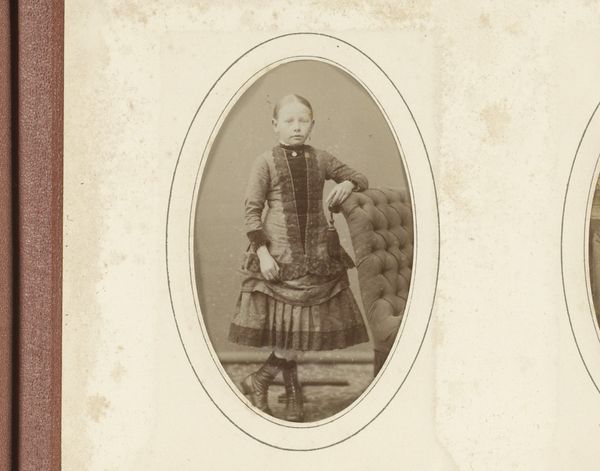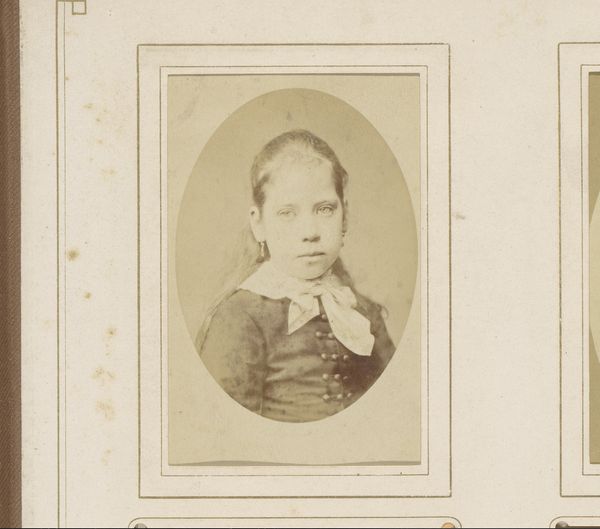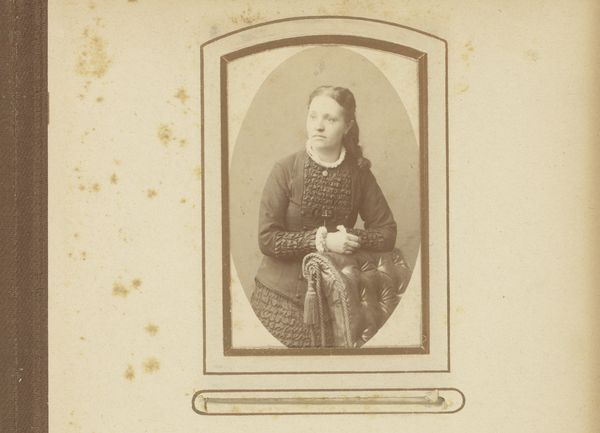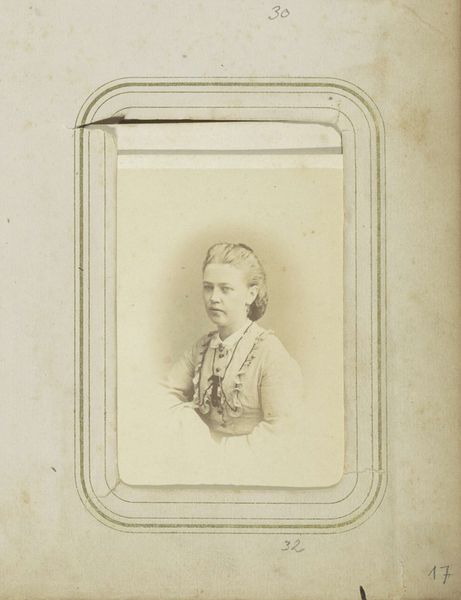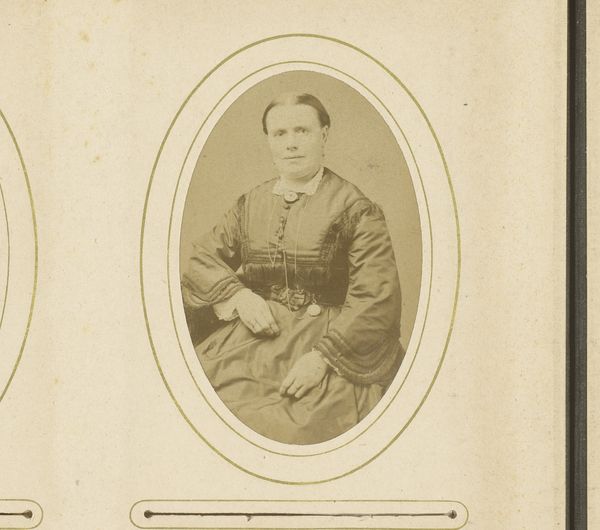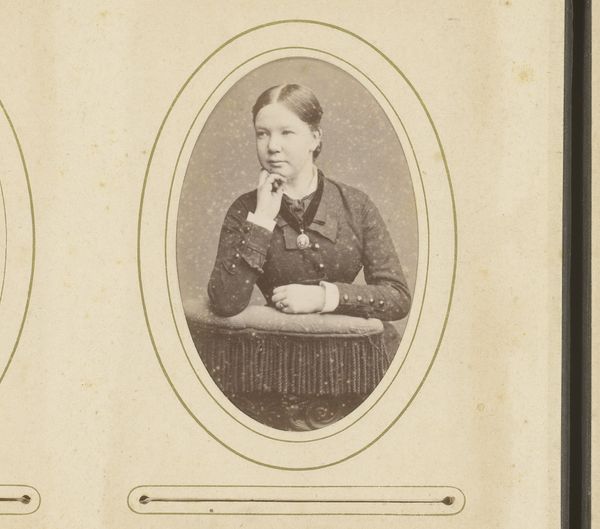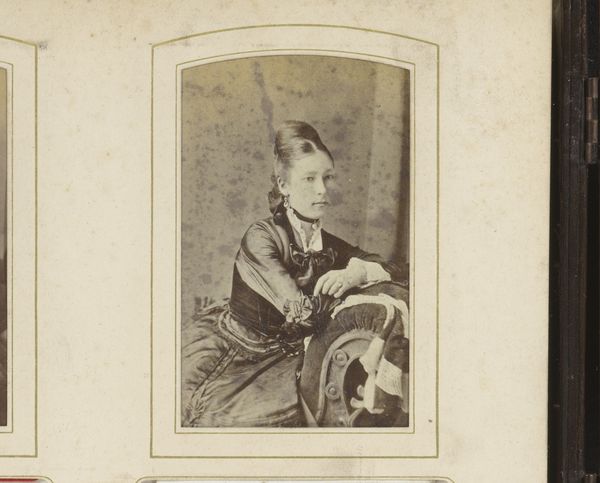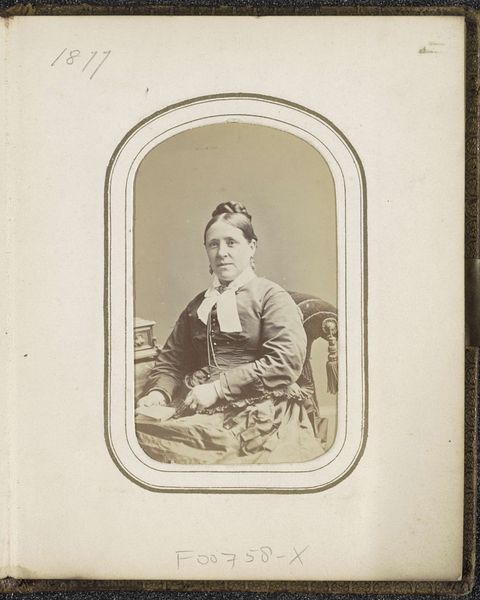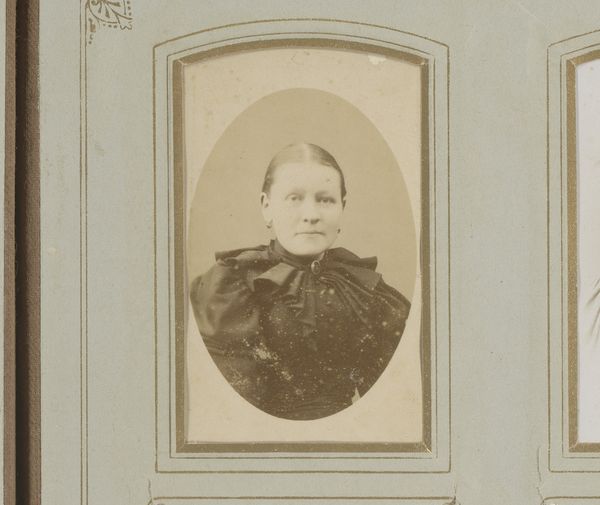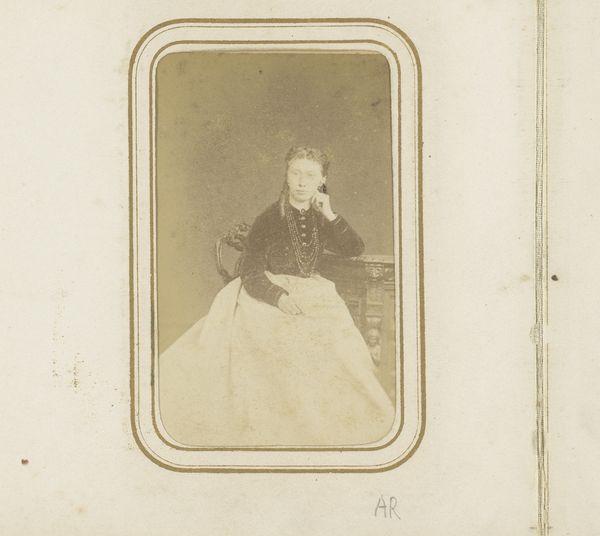
photography, albumen-print
#
portrait
#
charcoal drawing
#
photography
#
19th century
#
albumen-print
#
realism
Dimensions: height 83 mm, width 53 mm
Copyright: Rijks Museum: Open Domain
Editor: This is "Portret van een jonge vrouw" or "Portrait of a Young Woman" by Johannes Hendrikus Kramer, dating sometime between 1863 and 1901. It's an albumen print photograph and it strikes me as quite somber and formal. What stands out to you in this composition? Curator: Focusing solely on the internal structure of the image, one notes the geometric interplay. The subject is framed within a rectangle, itself echoing the larger rectangular format of the print. The curvilinear forms of her dress, softened by the lace detailing, contrast with the rigid lines defining the chair and the frame. Note how the tonal range, primarily in sepia, influences our reading of the image. What theoretical interpretations might arise from this visual assessment? Editor: Well, it does have a kind of structural symmetry…her pose is quite centered, and the chair echoes the line of the frame beneath it. It’s very controlled. Do you think that conveys something about the subject herself, or just the conventions of photography at the time? Curator: Consider the surface itself, the albumen print. Its very materiality imparts a specific aesthetic, with its characteristic sheen and tonal subtleties. The way light reflects, or is absorbed, contributes to our perception. It's crucial to address how medium specificity influences meaning. Editor: So, it’s not just about the person in the picture, but also about the chemical process that created the picture? Curator: Precisely. This invites examination of the image's structure and elements within their unique historical and technical constraints. Such details highlight photography's function as not only a medium but also an object. Did you notice any other forms or features when initially regarding it? Editor: I hadn’t really thought about the surface so much, I was mostly seeing a young woman and imagining her life, her stories… Now I want to analyze the use of geometry more closely! Curator: Excellent! Semiotics provides tools for analyzing these signifiers and symbols. By recognizing its formal properties, the photograph, and any other artwork, is transformed beyond being only representational; instead, it becomes self-referential and revelatory of the processes that govern it.
Comments
No comments
Be the first to comment and join the conversation on the ultimate creative platform.
